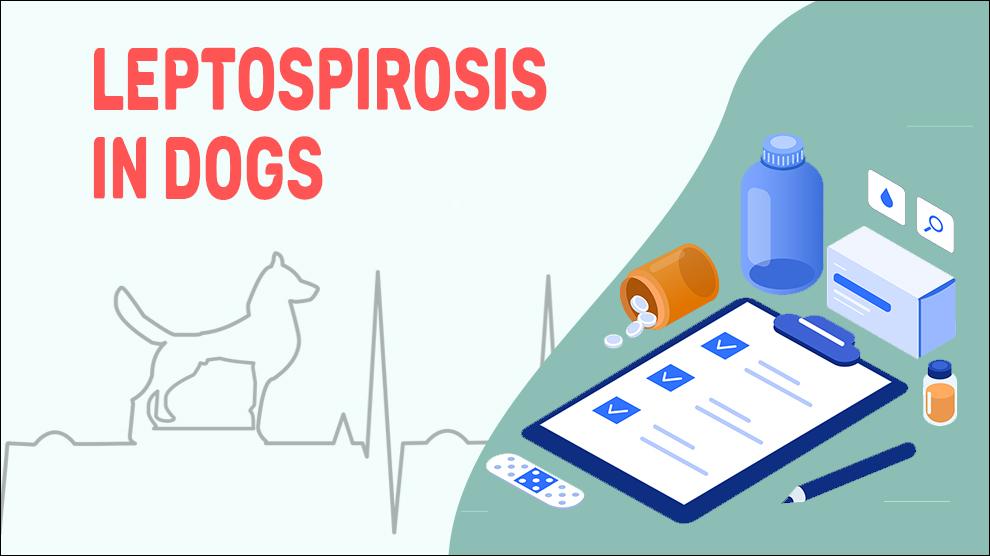What Is Leptospirosis In Dogs?
Leptospirosis is a widespread illness in canines. A hard-hitting, infectious disease, it is a contagion of the corkscrew-shaped bacteria named “Spirochetes.” It has also started to spread fear in the minds of everybody, especially dog lovers.
In the United States, more cases of this disease are found in late summer and heavy rainfall. But, winter conditions lowered the risk of this disease as the Leptospira can’t tolerate freezing temperatures.
As the Leptospira bacteria exist in mud and standing water, your pooch has more chance to get this disease. But, it can affect wildlife, rats, domestic livestock, and even people, too!
Leptospirosis can cause severe damage to your dog’s liver and kidney and your canine may die in severe cases. So, it is essential to know in detail about this contagious disease.
It is also important for you to know the ways to prevent your pooch from getting infected by this deadly disease. You must also know how to safeguard yourself from your Leptospirosis-affected pooch.
Symptoms Of Leptospirosis In Dogs
Leptospirosis can present with a wide range of symptoms, which can vary in severity.
Some of the most common symptoms of leptospirosis in dogs include:
- Vomiting
- Increased thirst and urination
- Diarrhea
- Blood in urine
- Lethargy
- Loss of appetite
- Muscle pain
- Jaundice
- Shivering and fever
- Stiffness and joint pain
Treatment Options For Leptospirosis In Dogs
Leptospirosis is a serious condition that requires immediate medical attention. Treatment typically involves a course of antibiotics, such as doxycycline or amoxicillin, to eliminate the bacteria from the dog's body.
In severe cases, hospitalization may be required to provide supportive care, including intravenous fluids, electrolyte replacement, and pain management.
Home Remedies For Leptospirosis In Dogs
While treatment for leptospirosis should always be left to a veterinarian, there are a few things dog owners can do at home to support their pet's recovery:
- Hydration: Make sure your dog has access to clean, fresh water at all times. This will help prevent dehydration, which can exacerbate symptoms of leptospirosis.
- Rest: Encourage your dog to rest and avoid excessive activity while they recover. This will help conserve their energy and promote healing.
- Supportive Care: Provide your dog with supportive care, such as pain management and electrolyte replacement, as recommended by your veterinarian.
How To Prevent Leptospirosis In Dogs?
Preventing leptospirosis is the best way to protect your dog from this potentially fatal infection.
Here are a few things you can do to prevent leptospirosis in your dog:
- Vaccination: Vaccinating your dog against leptospirosis is one of the most effective ways to prevent this disease. Talk to your veterinarian about the leptospirosis vaccine and whether it is recommended for your dog.
- Avoid Contaminated Water and Soil: Keep your dog away from areas that may be contaminated with the urine of infected animals, such as ponds, streams, and areas frequented by wildlife.
- Practice Good Hygiene: Always wash your hands thoroughly after handling your dog or coming into contact with their urine or feces.
Affected Dog Breeds Of Leptospirosis
Affected Dog Breeds Leptospirosis can affect dogs of all breeds, ages, and sizes, but certain breeds may be more susceptible to infection.
These breeds include:
- Doberman Pinschers
- Terriers
- Rottweilers
- Retrievers
- Bulldogs
- German Shepherds
Causes For Leptospirosis In Dogs
Causes:
Leptospirosis is caused by a bacteria known as Leptospira. This bacteria is commonly found in water and soil contaminated with the urine of infected animals.
Dogs can become infected with leptospirosis by drinking contaminated water or coming into contact with contaminated soil. The bacteria can also be spread through contact with the urine of infected animals, such as rats or other wildlife.
Dogs can become infected by coming into contact with contaminated water, soil, or urine of infected animals such as rats, mice, skunks, raccoons, and deer.
This bacterium can enter the dog's body through cuts or abrasions on their skin, or through their mucous membranes such as the eyes, nose, or mouth.
When To See A Vet For Leptospirosis In Dogs?
If you suspect that your dog may have leptospirosis, it is important to seek veterinary care immediately.
Symptoms of leptospirosis can be similar to other conditions, and a definitive diagnosis can only be made through blood tests and urine tests.
Early diagnosis and treatment can significantly improve the outcome for your dog.
Food Suggestions For Leptospirosis In Dogs
While there is no specific diet that can prevent or cure leptospirosis, feeding your dog a healthy, balanced diet can help support its immune system and overall health.
It is also essential to ensure that your dog has access to clean, fresh water at all times to prevent dehydration.
Conclusion
Leptospirosis is a serious bacterial infection that can affect dogs and lead to a wide range of symptoms, from mild lethargy to severe organ failure and death.
The bacterium responsible for this infection is commonly found in the water, soil, and urine of infected animals.
While there is no specific diet that can prevent or cure leptospirosis, feeding your dog a healthy, balanced diet and providing them with clean, fresh water can help support their immune system and overall health.
If you suspect that your dog may have leptospirosis, seek veterinary care immediately for early diagnosis and treatment.

















